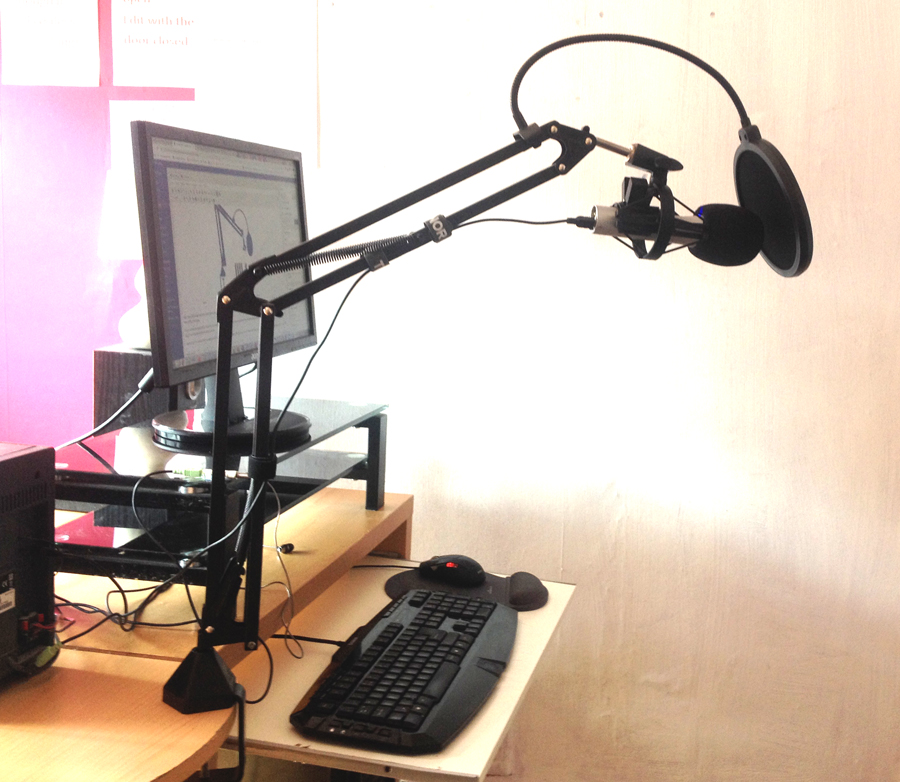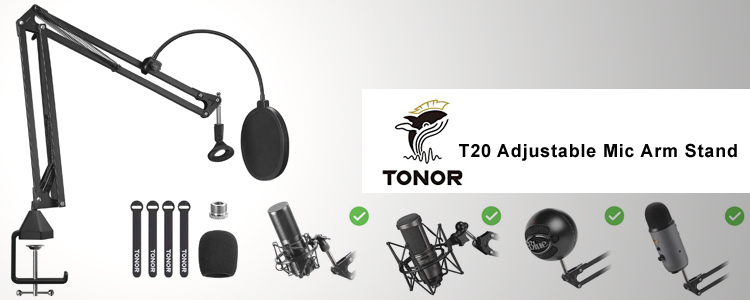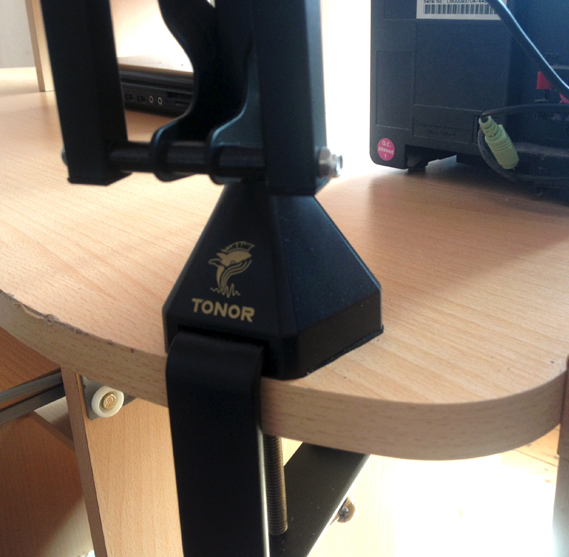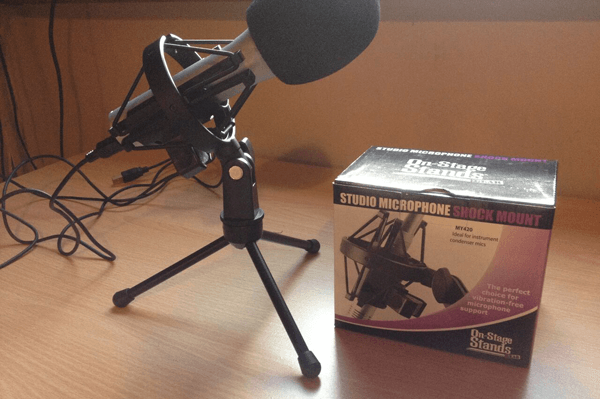Transform ergonomics, improve posture and easily get the microphone in front of your face for the best sound with this adjustable sprung mic stand.
After years of straining forward to speak into my microphone, I finally purchased my first desk-mounted adjustable microphone boom arm – the Tonor T20. Not only was it gotten at a good price, it’s of a sturdy build with a wider-than-usual base with screw clamp.
When I started my mostly home-based biz, I was broke, so managed to get by with cheaper, lower-quality, less-than-ideal technology such as a USB mic headset.
It was alright, but the microphone was “omni” meaning it picked up background noise. Later, lots of time was spent doing deep research on microphones and, in particular, the ATR-2100 which I now own and still love, mostly because it’s a noise-cancelling mic with inputs for either USB or XLR.
Fast forward and I now have the TONOR boom arm, which you can usually get it on Amazon you’re in the UK or the USA. I did notice recently it was hard to find though.
This mic came with a little plastic tripod big enough to stand the mic on the desk, and together with the shock mount I acquired, any knocks, bumps or the sound of keyboard typing was significantly lessened. Not ideal.
However, one problem persisted. For years I have battled the ongoing issue of a bad physical posture due to hours spent on video/audio calls on Skype.
Because I would lean forward to get near enough to the mic (while mousing and typing, this is awkward) my neck and back suffered. I knew a proper boom arm was needed, one with springs to bring the mic toward me rather than the other way round.
Initially I visited the local music shop and was sold a mic arm for singers and guitarists.
In an effort to be supportive of local businesses I went along with the idea that it was suitable, but upon setting it up, realised it really couldn’t properly handle the weight of the mic. Everything tipped over.
Kicking myself, I went to Amazon (sorry local high street, I tried!) and, after two weeks or so researching, decided to buy the TONOR suspension boom scissor mic stand for £39.99 at Amazon UK. You can get it on Amazon USA too but I dunno how much for.
Now that I have bought the thing, the mic can indeed be positioned very close to my mouth with ease and without awkwardness.
I can recline in my office chair during a conversation without once having to crane, strain or be uncomfortable. It has lots of positive reviews on Amazon and I’m glad I chose it, because judging by the comments on other similar products, the Tonor has a sturdiness the others don’t.
There are similar products to the Tonor, but be careful with the Amazon reviews. Many of them are straight up fucking bogus! Here’s what to watch out for.

My COVID lockdown work room with the mic stand clamped onto an adjacent desk
There were cheaper alternatives but I know that a poor quality or inappropriate product only means you pay again and again in future, either by having to replace the product with something better or just because you have to tolerate caveats.

The included pop shield isn’t always needed – on a video call, it looks like I’m hiding so I bend it out of the way
Regarding how much weight it can handle; the Amazon reviews of the Tonor were saying it could hold the weight of the Blue Yeti! If you don’t know, the Yeti is a microphone that looks a bit like R2-D2 and about as heavy! I’m not sure that this boom arm could support that weight.
As a bonus, the TONOR comes with a pop filter and foam ball, which are welcome additions.
I wish I’d bought this piece of equipment years ago as the mere fact that I’m able to physically and easily talk into the mic within the “sweet spot” of the cardioid pickup pattern means the quality of the audio sounds more professional.
When taking an audio only call (I use a phone number routed through Skype), I prefer standing rather than sitting and can adjust the mic stand completely vertical, and fast.
When you know how to properly use a mic as part of remote working culture, your voice sounds deeper, your words are audible and anyone listening tends to get what was said the first time. Presenting to a group through Zoom or whatever you’re using will be much better.
Also, as someone who records lots of unlisted YouTube videos for marketing, troubleshooting or as general sales follow-ups, I now have an almost perfect audio recording system.



